Sparrow or Mouse? Northern Naturalist #25
LeConte's Sparrow, My Breeding Bird Survey, Review of Naming Nature, plus News and Notes
LeConte’s Sparrow
As we walked down a road in Northwestern Minnesota, our group heard the soft trilly buzz of a LeConte’s Sparrow. It was singing from a grassy field that was not as wet as their usual chosen fields, so we walked in to get closer. We would move a little closer, the bird sang again, we moved closer, the bird sang again; this happened several times, and still, no one could see it. It seemed ridiculously close, so we moved one more time, and then it sang behind us! Along with low, short flights in the grass, LeConte’s will scurry along the ground, seeming more like a mouse than a bird.
LeConte’s Sparrow (Ammospiza leconteii) is probably one of the least-known American birds. It owes its obscurity to its range and breeding habitat (wet meadows, or shallow marshes across prairie Canada and northern Wisconsin, Minnesota, and North Dakota). Add to this its secretive behavior and non-flashy plumage, and its obscurity is assured.

LeConte’s is a small sparrow with a pointed tail; bright ochre (yellow-orange) supercillium (eyeline); whitish central crown stripe; broad, dark, lateral crown stripes; chestnut streaks on the nape. On adults, the breast is ochre and unstreaked. LeConte’s is similar in size and behavior to Henslow’s Sparrow, but Henslow’s has a much darker general appearance and a streaked breast, to name only two differences. Among other similar grassland sparrows, Grasshopper Sparrows are larger and larger-billed, and Baird’s Sparrows have distinct face and breast markings. The most likely confusion is with Nelson’s Sparrow, which prefers similar habitat and may nest nearby. The best fieldmark for separating these two is the central crown stripe—white on LeConte’s, gray on Nelson’s.
Getting a look is easier said than done. One field guide says, “Males will sing from near the top of a piece of grass.” This is true and means that picking one out, even when you can hear it plainly, can be a challenge. I still try to turn the much more robust trill of a Savannah Sparrow into a LeConte’s from time-to-time, but with a little practice, the two songs are easily distinguishable.
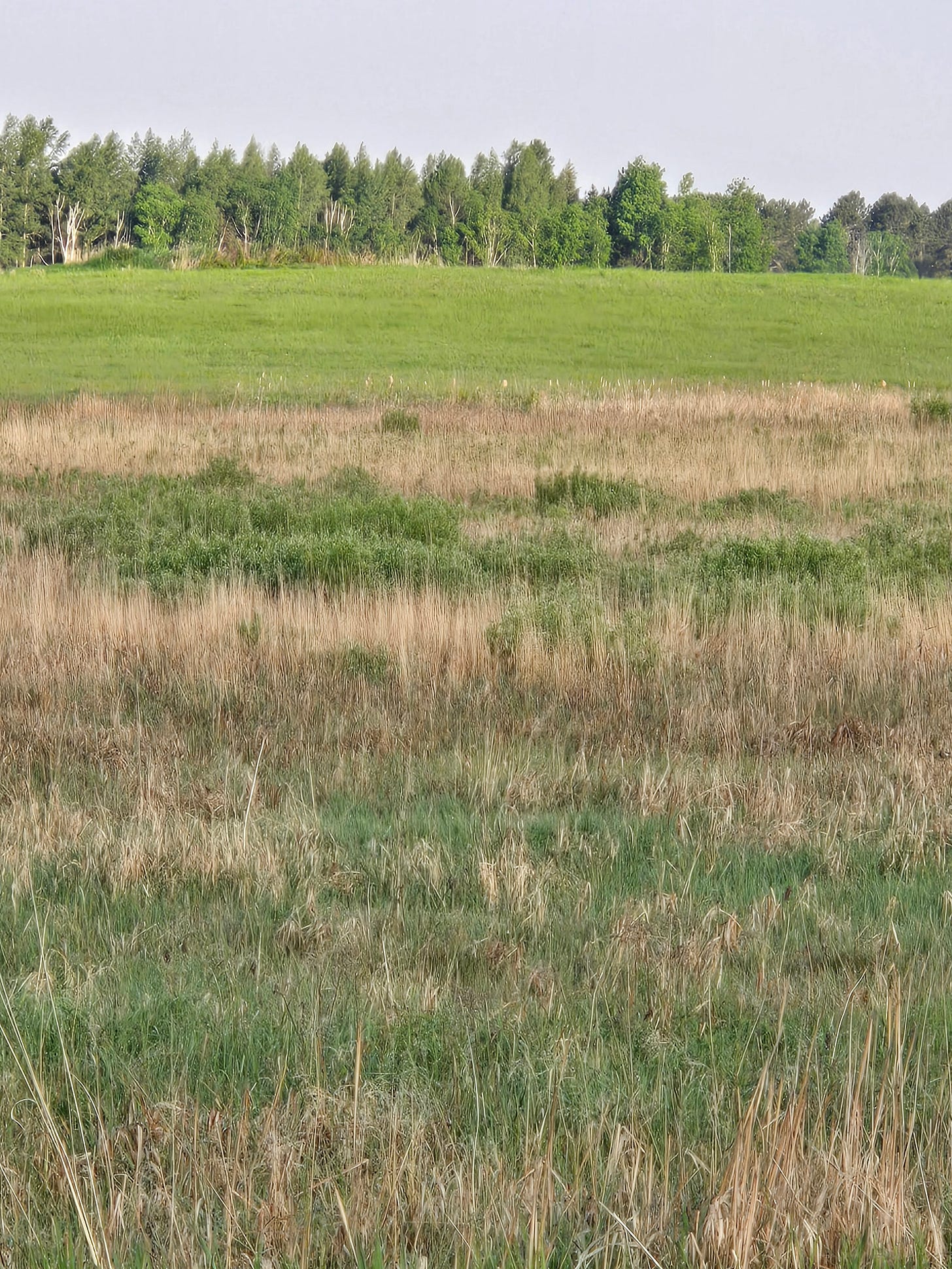
LeConte’s winter in the southeastern United States. They are secretive during migration too, so many serious bird-listers come to Minnesota in summer to find breeding LeConte’s. This is one of my favorite species to help people find. It’s not that common, and finding it requires some real birding skill.
My Breeding Bird Survey, 2025
I conducted my breeding bird survey in Aitkin County this year on June 5th. For my route, the window given by the USGS Patuxent Wildlife Research Center and Environment Canada, who administer the program, is from May 26th to July 4th. I prefer to do the survey in mid-June, so I was a little early this year, but the conditions on the 5th were perfect, and some years, it can be difficult to fit the route in due to windy or rainy weather.
This was my 32nd year running the route. When I began this year, it was dead calm, and that lasted throughout the survey until the final two stops, when it became suddenly windier (15 mph). Most years, dead calm would have meant swarms of mosquitoes, as well as ideal listening conditions. This drought year, however, there were few bugs. (Also, when I began the survey, it was 39 degrees, so that probably contributed to the lack of bugs.)
Breeding Bird Survey routes are run across the United States and Canada. They require knowing all the songs of the birds you might hear in the area of your route. Routes are 50 stops, a half mile apart. At each stop, you listen for three minutes and note all the individuals you hear. After you’ve finished, you enter your data online and ship your records back to Patuxent.
As always, it was interesting to see the old route and a true pleasure to hear so many singing birds. I ended up with 80 species, which is about average for this route. The big gap was swallows. I had one Tree Swallow and no other swallow species. I assume this is related to the lack of bugs. The entire migration has been a little delayed this year, and the best hypothesis about it that I have heard is that it’s related to the drought. There are still millions of birds migrating, so maybe the swallows are on the way now.
There are around 70 species that I expect to hear or see every year, like the Wilson’s Snipe in the photo just above. This year, in addition to the swallows, I had no Northern Flicker. I’m guessing that they are nesting now and thus quiet, because they are usually a conspicuous bird. I don’t think I had any first-time birds, although I’m not sure about Pied-billed Grebe (I haven’t had time to dig through my records, but it may have been a first.) I had both Black-billed and Yellow-billed Cuckoos. We’re at the height of the Eastern Tent Caterpillar (the favorite food of cuckoos) cycle, so that makes sense. I get Black-billed most years; Yellow-billed in just a few years.
Sandhill Cranes continue to show that they are thriving. I heard them at around a dozen stops this year; in the early years, we only found them in one particular field (the 50th stop of our route), and they were there again this year too. I think I have only ever had LeConte’s Sparrow at one stop—a juicy looking wet meadow—and it was there again this year. (It’s the stop in the photo in the article above.). I had a couple of Sharp-tailed Grouse for the first time in a few years.
My route begins at 4:50 am local time, so I get up and leave at 3:30 to drive to a spot west of the town of Sturgeon Lake, Minnesota. (It’s always quiet in Sturgeon Lake when I drive through.) I finish sometime after 9:00 am. In addition to the birds, I heard coyotes, and I found Indian Paintbrush, a wildflower I always look for on my route.
My most frequent companions were Sedge Wrens, Veerys, and Red-winged Blackbirds. I again had quite a few Golden-winged Warblers, and as in the past, I heard a bunch of Bobolinks during the second half (more farm country) of the route. God willing, I’ll do it again next year!
Review of Naming Nature by Carol Yaesuk Yoon (Norton, 2009)
Recently I discovered the book, Naming Nature, by Carol Yaesuk Yoon, and I recommend that you read it. It is about the science of taxonomy (I wrote about taxonomy and the conventions of naming living things briefly in the second issue.) Yoon makes a strong case that scientific taxonomy is in some part responsible for the divorce of humans from the environment around them. She describes and defines the concept of umwelt, a German term that means “the world around us.” She makes the case that humans have always had an umwelt particular to them as individuals or smaller groups. The naming conventions in these “worlds” are highly specific. Yoon posits that one way to define taxonomy is that it is the attempt to conquer all of the other umwelts.
There is great strength in names that are shared by others. At our old house in the Duluth, Minnesota hillside, our back yard hosted a good crop of a plant that I called, “those big purply plants that grow by the back step.” This name is not shared by anyone else—it’s a weak name, a fact proven by the need for anyone who heard me say it to ask a couple of more questions to figure out which plant I meant. I have since learned that this plant is known in English as Dame’s Rocket, a much more powerful name, known by many.
Of course, the problem with “Dame’s Rocket,” is that it doesn’t work in other languages; also, even in English there are a bunch of other names for this plant: damask-violet, dame's-violet, dames-wort, dame's gilliflower, night-scented gilliflower, queen's gilliflower, rogue's gilliflower, sweet rocket, mother-of-the-evening, and others. So, the father of modern taxonomy, Karl von Linné, gave it a binomial name: Hesperis matronalis. Under that name, it can be known across languages and and nations as the same plant. The binomial has the additional solid strength of being the name given by Science! and even more influentially, written down in many books, and now, on many web pages. In Swedish, Dame’s Rocket is called Dames Raket—clearly a name stolen from the English name. Here, it’s a non-native invasive.
Karl von Linné (Carolus Linnaeus in Latin, 1707 -1778) is the Swede who is credited with formalizing binomial nomenclature, which is the practice of naming organisms with two names, a genus name (which links it with other, closely-related organisms) and a specific name (which identifies it as a separate species). So, Twinflower, which I will write about in the next issue, has the binomial Linnea borealis. It was said to be Linnaeus’s favorite flower and appeared in his portraits on on his coat of arms.
As the best-known proponent of the binomial nomenclature, Linnaeus is symbolic of the abandonment of the umwelts articulated by Yoon. However, if you think I’m going to throw under the bus a man who was born in the very county of my ancestors (Kronobergslän) in Sweden, and who, moreover, I believe to have been my mother’s favorite scientist, you are mistaken.
Linnaeus was, of course, a product of his time, the height of the European enlightenment. He was wrong about some things. Whoever the joker was who slipped the mermaid into the report from Brazil, it worked—Linnaeus published it. Yet, Linnaeus was right about many more things. Let’s see how it goes for you, when you set out to name all of the living organisms on earth!
Carol Yaesuk Yoon’s excellent book lays the groundwork for a strong case that the waves of name changes and re-organizations that seem to convulse taxonomy more and more frequently are the same enlightenment emphasis on leveling everything—erasing the particular, local knowledge of people everywhere. The book is well-written, engaging, and truly interesting.
News and Notes
In a recent reference guide to sparrows, the author, a scholar and historian in addition to being an expert birder, removed the “apostrophe S” in the names of certain species, like LeConte’s Sparrow, discussed above. He wrote that he did not want anyone to be under the misunderstanding that this name implied ownership by LeConte. This is preposterous (especially in the context of an otherwise fine book). I would venture that not a single person who has learned of the existence of LeConte’s Sparrows thought, “I’ll bet they belong to LeConte!”
We’re almost to the summer solstice (June 20th at 9:42 pm in my location). It always amazes me that, as I am just getting rolling with summer activities, the peak passes. After June 20th, it will be all downhill until the Winter Solstice. I notice it most in the color of the deciduous leaves, which, around solstice time, pass from the bright green of spring to the darker shades of deep summer.
Summer Stars
By Carl Sandburg
Bend low again, night of summer stars.
So near you are, sky of summer stars,
So near, a long-arm man can pick off stars,
Pick off what he wants in the sky bowl,
So near you are, summer stars,
So near, strumming, strumming,
So lazy and hum-strumming.
A happy summer to you, and as much hum-strumming as you would like, is my wish. Thank you for reading.




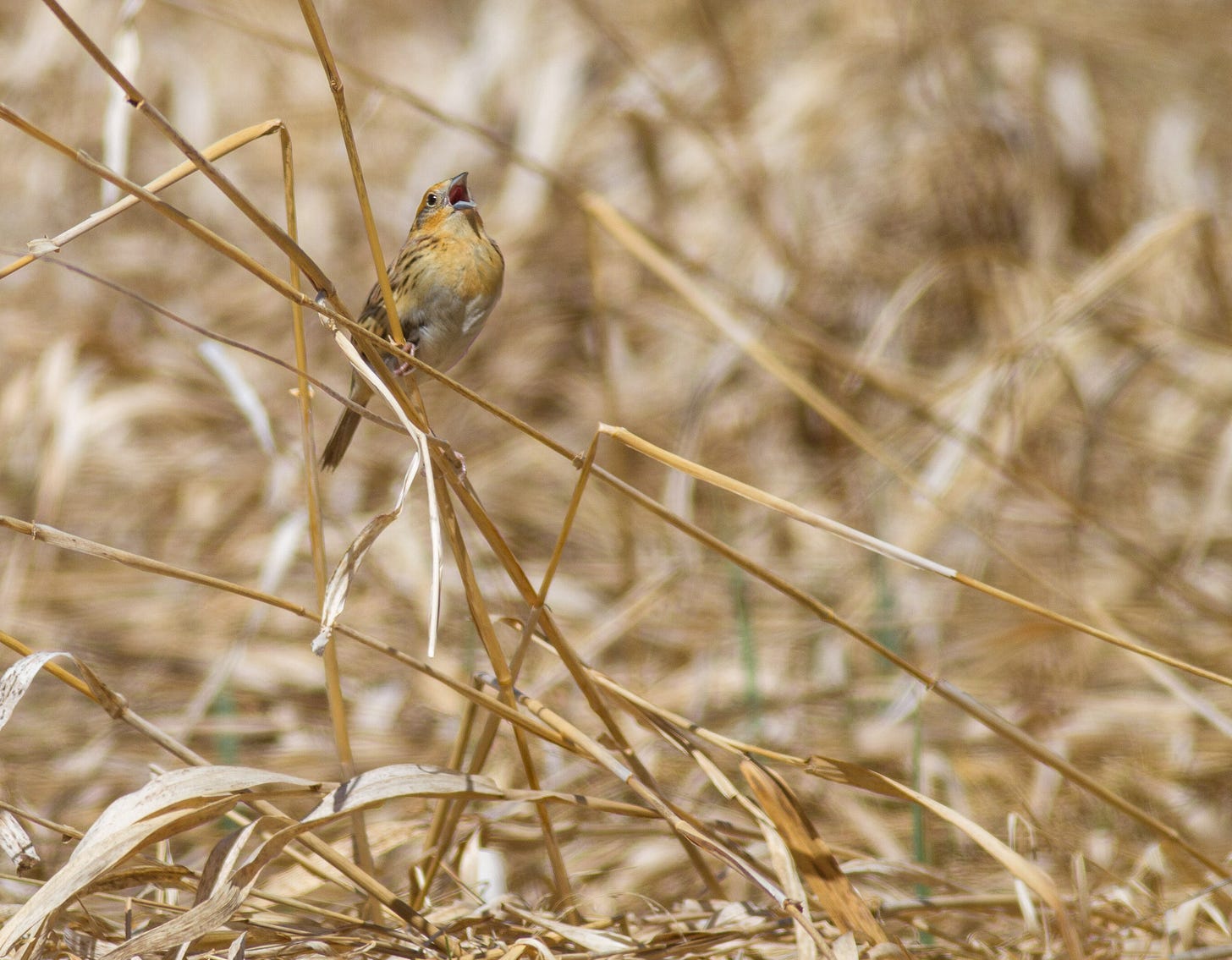

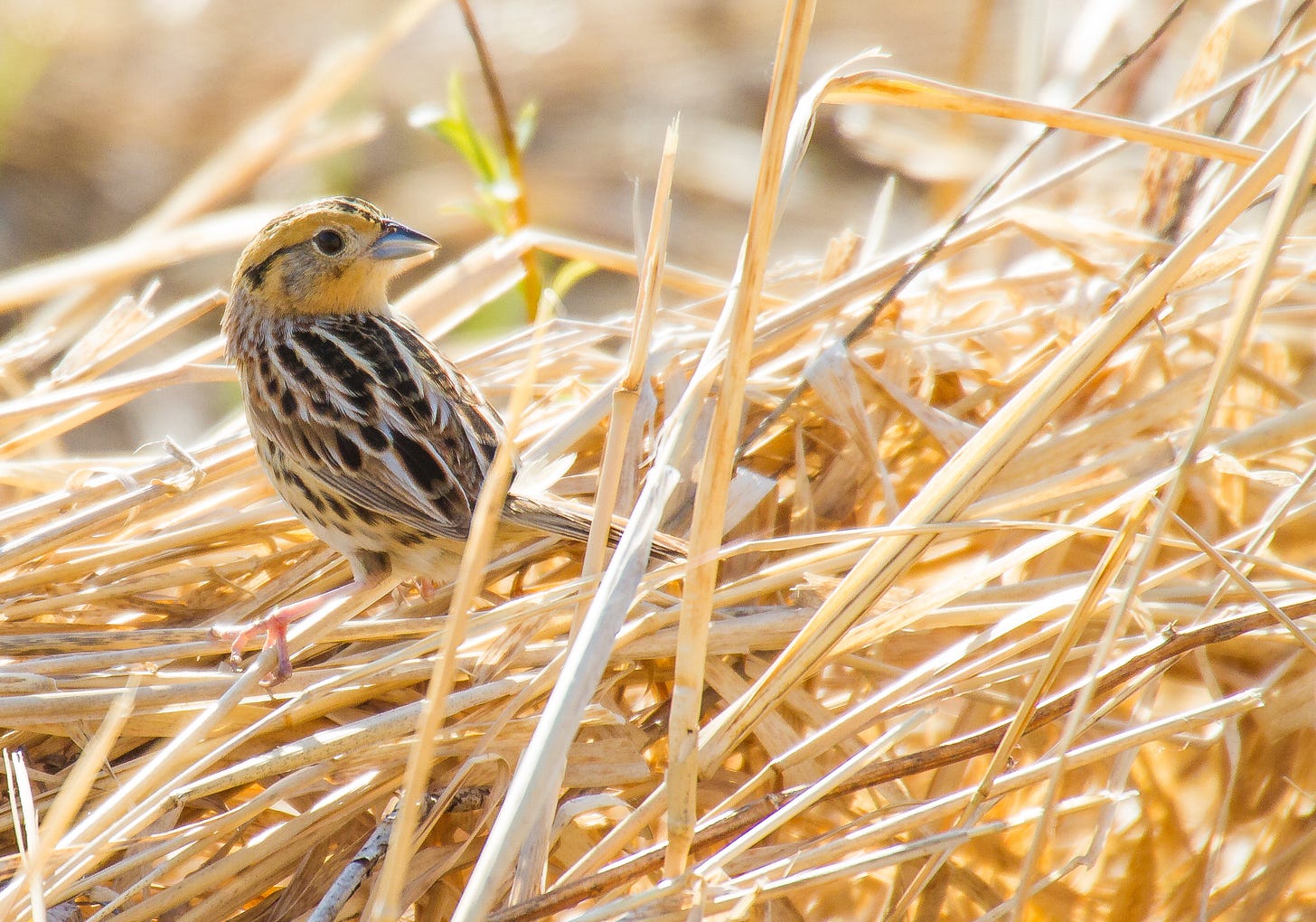
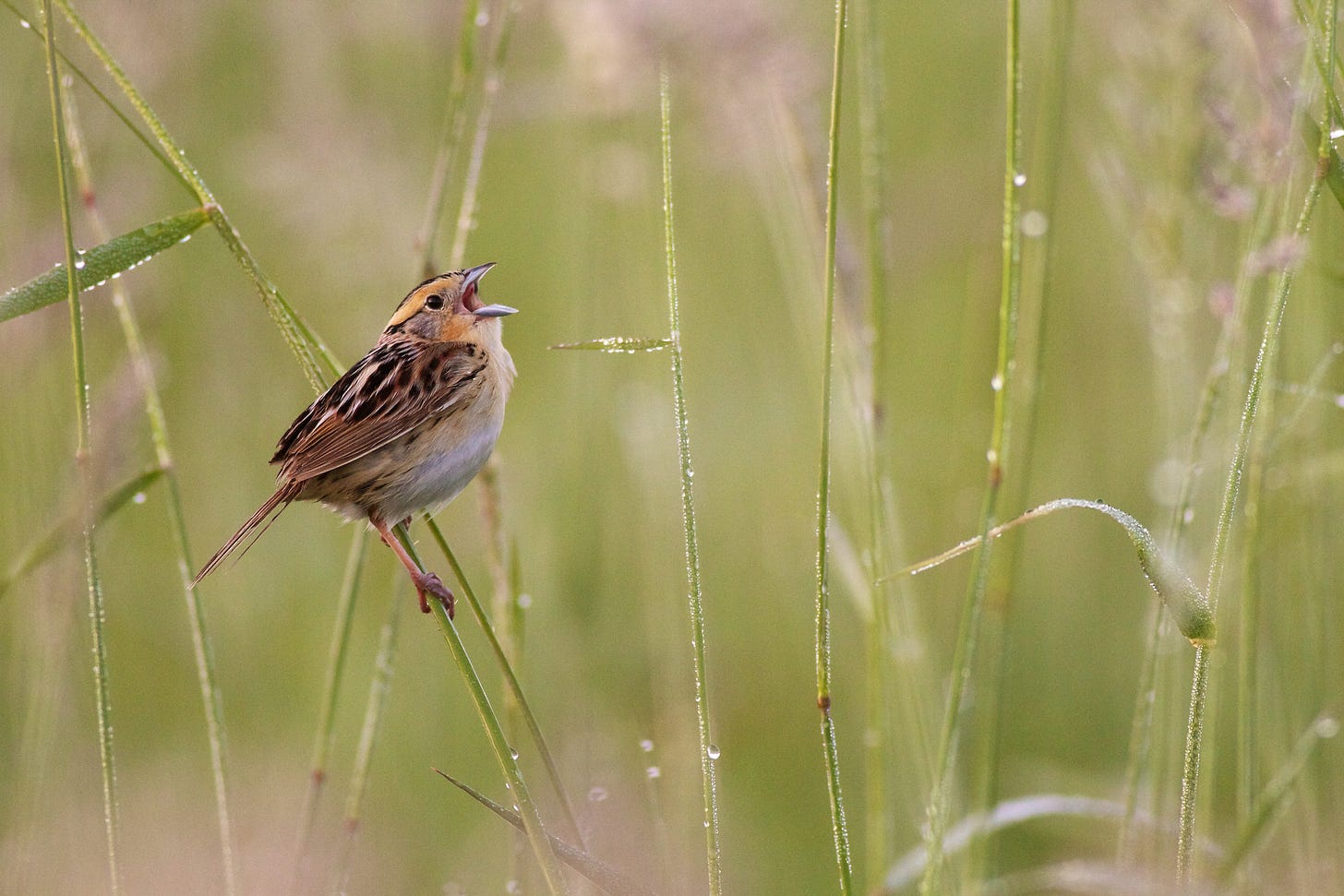



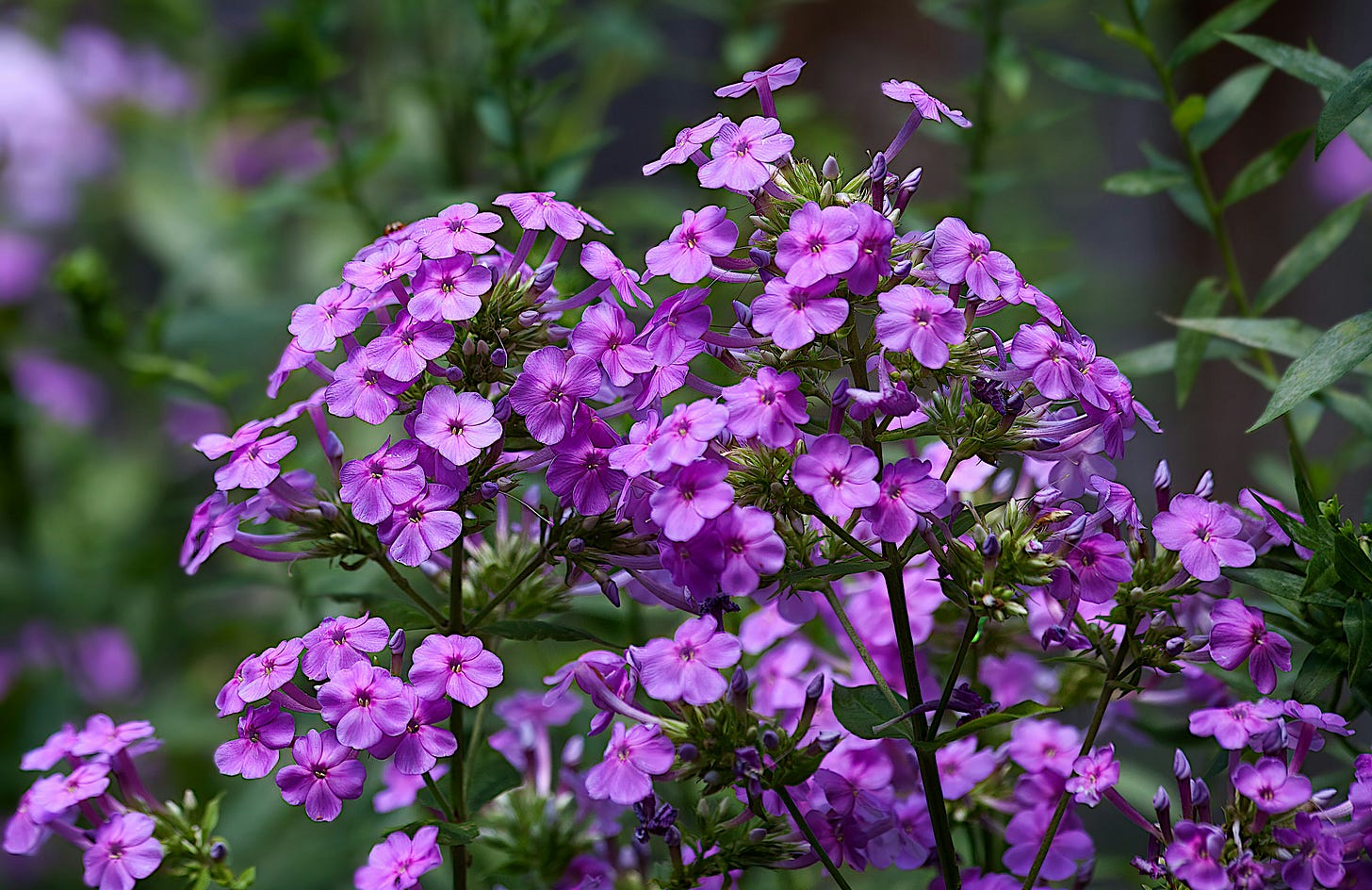


Ah, LeConte's. High on my wish list, but no luck yet.
I can't believe we are in mid-June already. A couple of days ago I found myself saying, "oh, I'm going to do that in the Summer," when I realized it's time to do it, because it IS Summer!!!